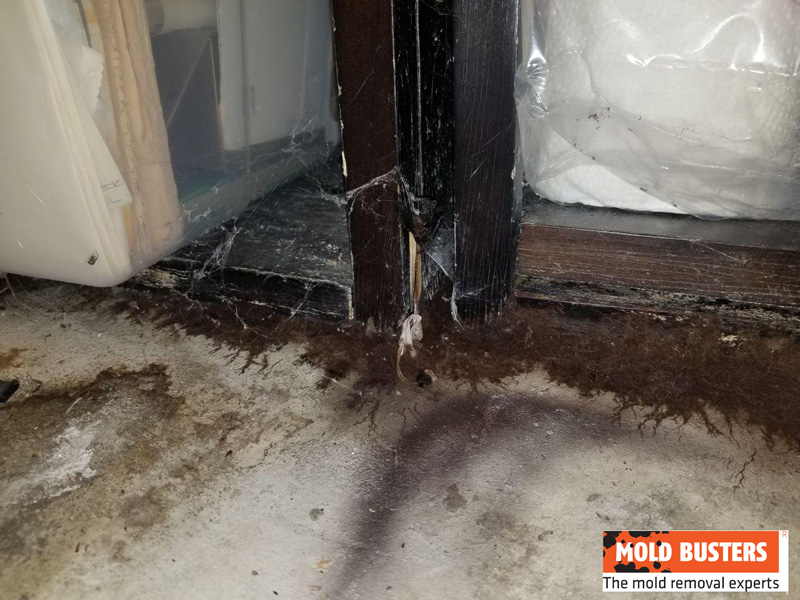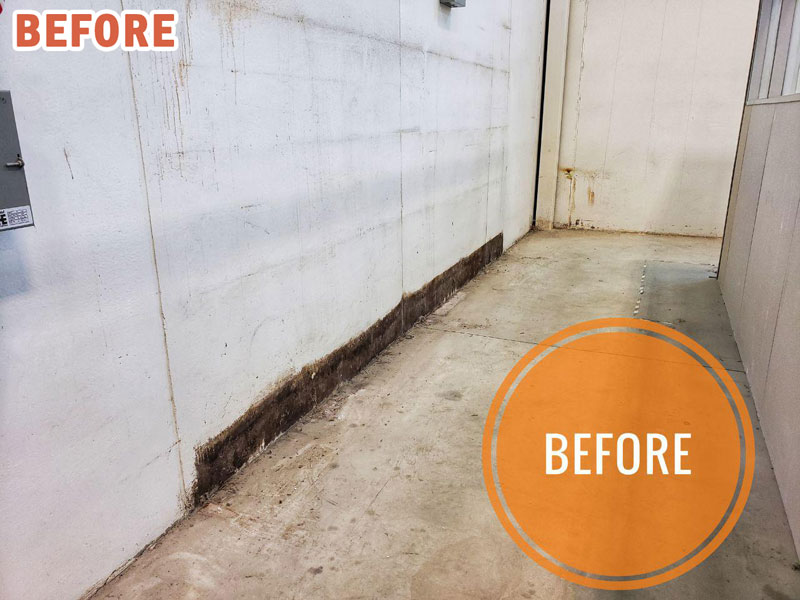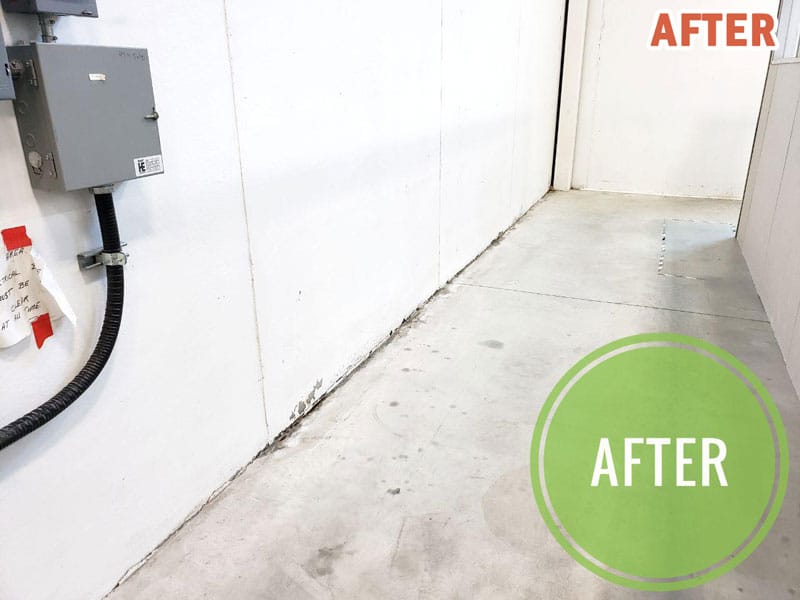Brown Mold – What Is It & What Causes Brown Mold?
What is brown mold – well, other than brown? Are there any health risks associated with having it in your home or business? Our team has dealt with this species many times over years of offering mold testing services; let’s help fill you in on all the important details.
If you encounter brown mold in your home, you’re likely wondering what its colour and appearance can tell you about it.
How is brown mold different from other molds? Is it safer or more hazardous than other molds? Can I get rid of it myself or do I need an expert to remove it?
Worried About Brown Mold? Get a Free Inspection!
Brown mold can be a hidden hazard in your home, often indicating underlying moisture issues. Don’t let it go unchecked! Contact Mold Busters for a free virtual mold inspection. Our experts are ready to provide you with a comprehensive assessment and a plan to tackle any mold issue, ensuring your home is safe and healthy. Act now to protect your space!
What is brown mold?
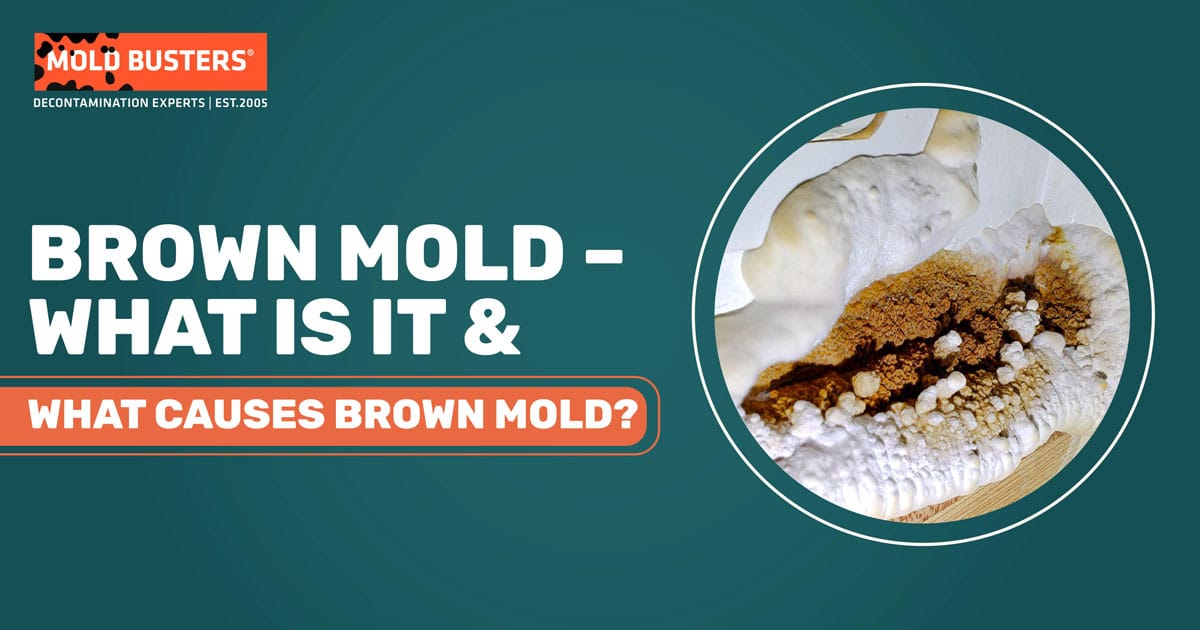
All molds fall into the kingdom of fungi. Among other things, this means that they are living organisms that depend on organic matter, water and oxygen to survive.
Of the thousands upon thousands of species of mold that exist on Earth, many take on a brown colour—though depending on the lighting conditions and the surface they’re on, a brown mold may appear black to the naked eye.
Understanding brown fungus: what you need to know
When we talk about brown fungus, it’s essential to recognize that the term can encompass a variety of fungi that appear brown in color. These fungi can be found both indoors and outdoors, and their presence can raise several questions for homeowners and property managers.
While brown fungus might not always pose severe threats, it’s essential to be informed and take proactive measures to ensure a safe and healthy environment.
What does brown mold look like?
There are many species of mold that appear brown. Here are some characteristics of brown mold to look for:
- In early wwws, brown mold may look like spots or discolouration. Depending on the colour of the surface it is growing on, it may appear brown or nearly black.
- If left unchecked, brown mold can grow thicker, taking on a fuzzy or even hairy appearance. Some species of brown mold may even grow into thicker mushroom-like blobs.
- Brown mold is often seen growing on hard surfaces such as wood, walls, ceilings, floorboards or bathroom tiles.
Types of mold that are brown
Laboratory testing by an expert is required to definitively identify a particular species of mold. But if you have brown mold in the house, here are some of the more common suspects:
- Ulocladium: A genus of mold that requires even more moisture to thrive than other types of mold, often appearing as a result of water damage. It can induce allergic reactions and illness, and there have even been reported cases of deaths linked to Ulocladium mold.
- Cladosporium: A genus that produces darkly pigmented spores. It is known to cause allergies, asthma and, in severe cases, even fatal infections.
- Taeoniella: May appear brown or black. It often grows on wood and can cause wood rot.
- Pithomyces chartarum: A common and rapidly growing mold that can thrive in a variety of climates and temperatures. It produces mycotoxins that can cause illness in animals and humans.
- Aureobasidium pullulans: A species that takes on a variety of colours, from creamy or pink to black. It is extremely adaptable, growing on a multitude of surfaces and in a wide range of temperatures and moisture levels. A. pullalans is known to be an allergen and can cause a number of illnesses.
- Stemonitis: Also known as hairy brown slime mold, chocolate tube slime mold, tree hair or pipecleaner slime. It derives these names from the way it forms hair or feather-like threads. It grows quickly in damp conditions such as rotting wood or in bathrooms.
To make matters more confusing, mold infestations often contain multiple species of mold. Patches of brown mold in the home may often also include strains of Aspergillus and/or Penicillium, both of which may produce mycotoxins that are particularly hazardous to your health.
For more on mold identification, see our page on Types of Mold, or look up specific molds in our Mold Library.
Tan mold: a brief overview
Tan mold is a common descriptor for molds that exhibit a light brown or beige coloration. While not as frequently discussed as black or green molds, tan mold can still be a concern for homeowners:
- Origins: Like other molds, tan mold thrives in damp environments and can be found on various surfaces, from walls to fabrics.
- Health: While not inherently toxic, prolonged exposure can trigger allergies in sensitive individuals.
- Removal: Addressing moisture sources and cleaning affected areas can help in managing tan mold growth.
Brown mold vs. black mold: key differences
When it comes to mold, color can be a significant indicator of type and potential risks. Two common varieties homeowners often encounter are brown mold and black mold. Here’s a brief comparison of the two:
| Aspect | Brown Mold | Black Mold |
|---|---|---|
| Appearance | Can range from light brown to dark brown shades. | Dark black or greenish-black in color. |
| Common Types | Stemonitis, Ulocladium, among others. | Stachybotrys chartarum is the most infamous. |
| Health Risks | Can exacerbate allergies, especially in large amounts. | Known to produce mycotoxins that can pose severe health risks. |
| Remediation | Address moisture sources and clean affected areas. | Professional removal is often recommended due to potential health risks. |
In summary, while both brown and black molds require attention, black mold, especially Stachybotrys chartarum, is often considered more hazardous due to its potential to produce harmful mycotoxins.

Did you know?
Cladosporium is the 2nd common mold type found in homes we tested?! Find out more exciting mold stats and facts inside our mold statistics page.
Pictures of brown mold
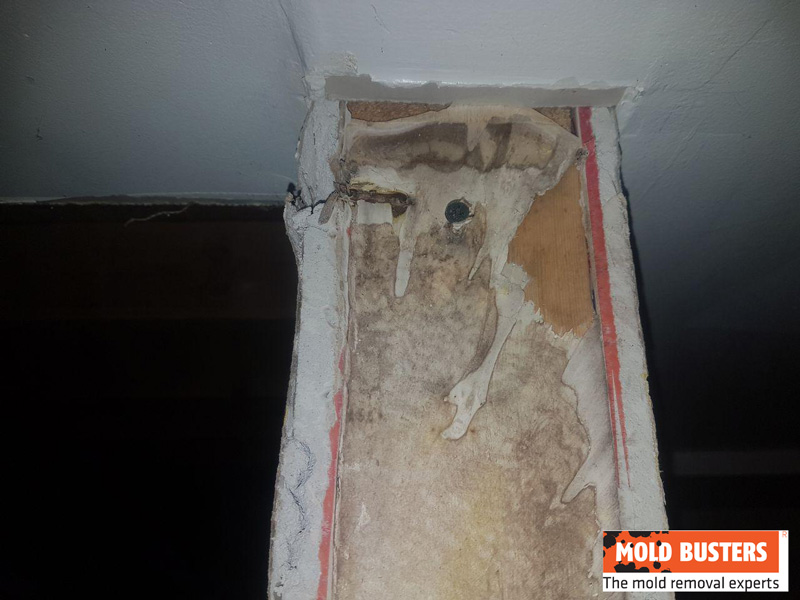
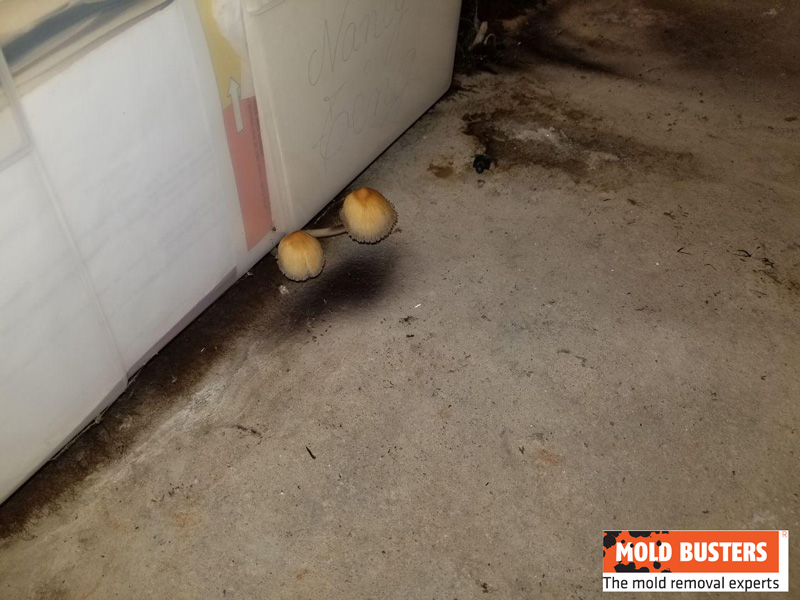
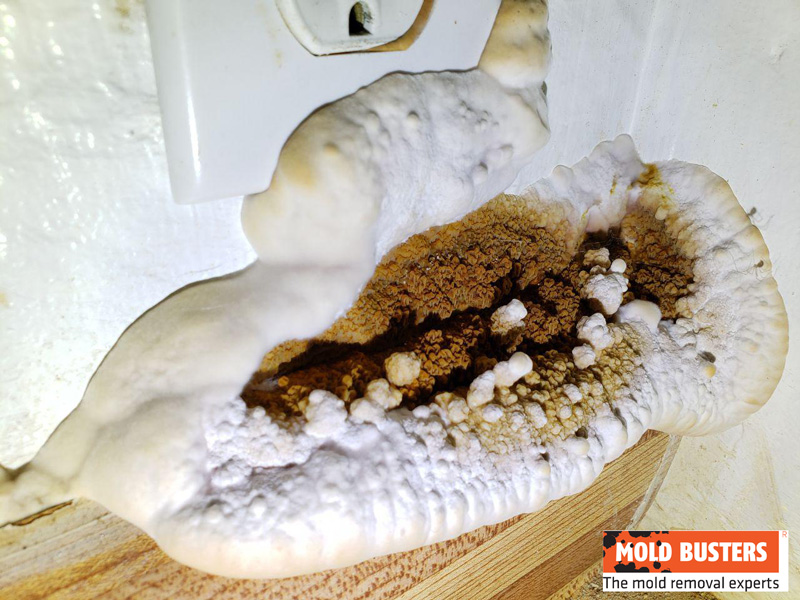
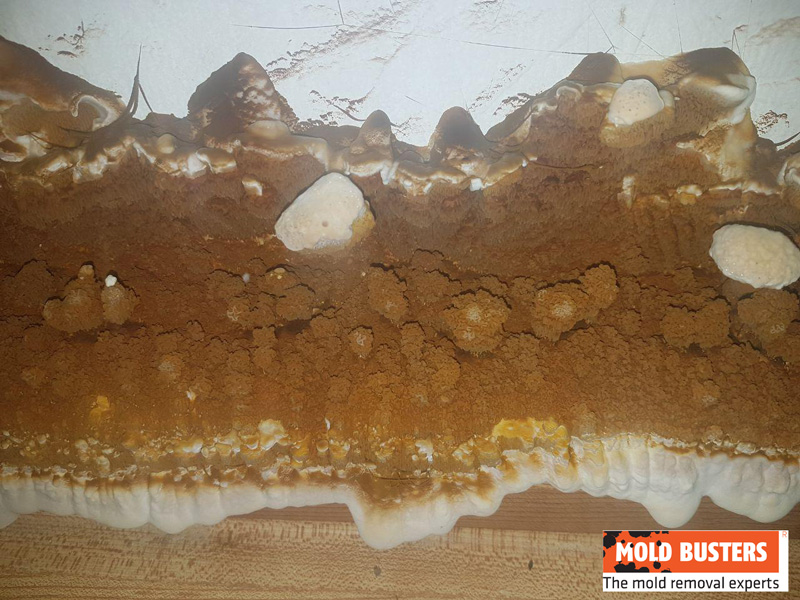
What causes brown mold?
Mold is a natural part of the outdoor environment—this is not a bad thing. It becomes a problem when mold spores enter our home and accumulate in high concentrations in our indoor air. How does this happen?
Mold spores travel via the air; when they settle on surfaces in our home that offer the right mixture of moisture, organic matter and oxygen, they take root, multiply and eventually cause a more serious mold problem.
Many species of brown mold prefer wood or other hard organic surfaces for their food, and many also prefer even more moisture than other species of mold. Brown mold also tends to thrive in dark environments.
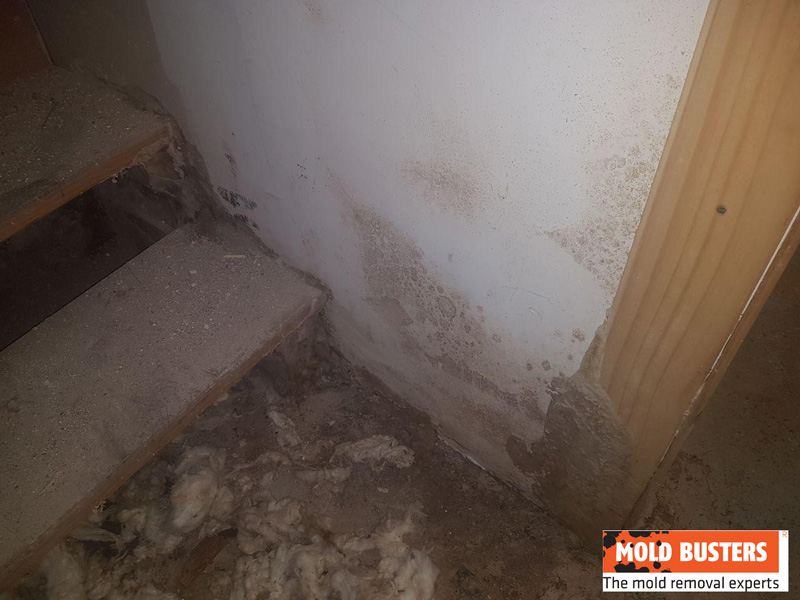
For more on this topic, see our article on Causes of Mold.
Where can you find brown mold in your house?
Since brown mold typically favours extremely damp conditions and wood surfaces, it is common to find it in bathrooms, attics, basements, or on ceilings and walls (especially where leaks or poor ventilation keep these surfaces damp).
For more on detecting mold around the house, see our section Where to Look for Mold.
Brown mold in bathroom
Bathrooms are humid by nature and, as such, are a magnet for thirsty mold spores.
This is particularly true of the moisture-loving brown mold species such as hairy brown slime mold or Ulocladium. The risk of mold in the bathroom increases if there is a leak or inadequate ventilation.
For help dealing with mold in the bathroom, see Bathroom Mold Removal.
Brown mold on ceilings and walls
The many species of brown mold that favour wood and other hard surfaces might appear on or inside your ceilings or walls.
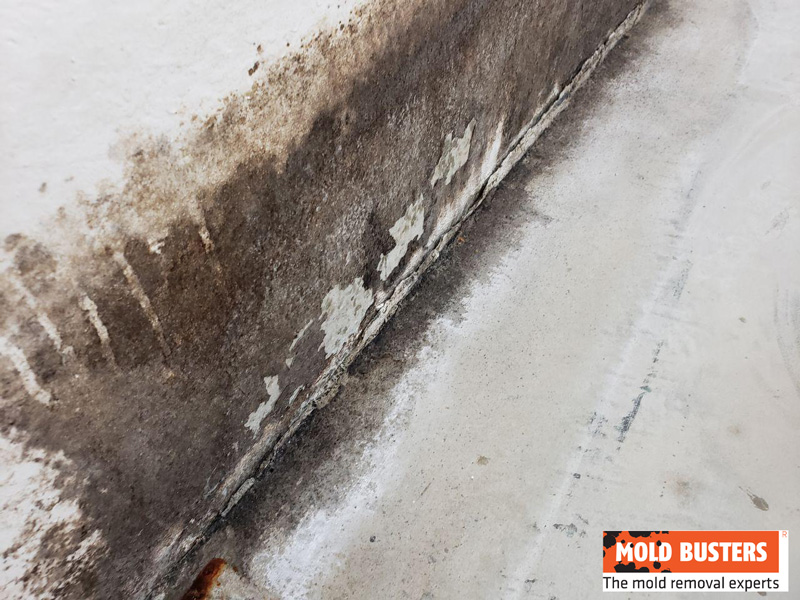
This is particularly true in humid areas such as basements, attics, bathrooms and laundry rooms.
If you spot brown mold in a room that’s otherwise dry, the culprit could be a leaky roof or pipe and/or condensation on pipes and vents above a ceiling or within a wall.
What are the health risks of brown mold?
As with other molds, certain types of brown mold can make you sick. Members of your family may experience allergies or other diseases, some potentially fatal. You could even experience poisoning by mycotoxins produced by some species of mold.
For more on health risks of mold, see our article on Health Effects of Mold.
Is brown mold dangerous?
Just how dangerous brown mold is depends on its species. Unfortunately, you have to get viable laboratory testing to definitively identify the species. However, if you have brown mold, here are some health considerations:
- All molds spread by releasing spores into the air; inhaling these spores might trigger allergic reactions and other respiratory problems
- Children, the elderly and people with compromised immune systems are particularly at risk when exposed to mold.
As noted above, certain species of brown mold are associated with more severe illnesses:
- Cladosporium in particular can cause various diseases of the lungs and other internal organs. In extreme cases, this species can have fatal consequences.
- Penicillium and Aspergillius are both types of toxic mold, which can produce mycotoxins and induce a variety of sicknesses and risk of death.
Is brown stemonitis mold dangerous?
Stemonitis, commonly referred to as the “chocolate tube slime,” is a type of slime mold that often appears brown in color. While it’s visually distinct and can be a cause for concern for many homeowners, it’s essential to understand its nature and potential risks.
Stemonitis primarily thrives in damp, wooded areas and is more commonly found outdoors than indoors. When it comes to the question, is brown stemonitis mold dangerous?, the answer is multifaceted:
- Health Implications: Unlike some other mold species, Stemonitis is not known to produce harmful mycotoxins. However, any mold, including Stemonitis, can exacerbate allergies or asthma in sensitive individuals when present in large amounts.
- Structural Concerns: While Stemonitis itself isn’t particularly harmful to building materials, its presence can indicate excessive moisture, which can lead to other mold types or structural issues if not addressed.
- Aesthetic and Odor Issues: Large colonies of Stemonitis can be unsightly and may produce a musty odor, impacting the overall ambiance of a space.
While Stemonitis is not considered one of the more dangerous molds, it’s always a good practice to address any mold growth promptly to maintain a healthy living environment.
Are there other dangers associated with brown mold?
While you’re quite right to make your health your first concern when faced with brown mold, there are other dangers you should be aware of, to protect your house as well as your health.
Brown mold and wood rot
Brown mold likes to grow on damp wood. It uses the wood as a food source and, as such, it literally eats away at the wood in your house. Remediation from a brown mold infestation needs to include assessing and repairing any damage to the wood structures in your house.
Water damage
Brown molds typically favour particularly moist conditions, often appearing after flooding. If you see brown mold in your home, you should immediately suspect a leak or other water damage. Aim to not just get rid of the mold, but to fix the problem that caused it to develop in the first place.
Inadequate ventilation
Even if you have no leaks, flooding or other water damage, some areas may be prone to brown mold growth because of poor air exchange and inadequate ventilation. The presence of brown mold might be an indication that you need to install additional ventilation for improved air flow and/or a dehumidifier to keep relative humidity down (below 50%).
How to identify brown mold?
This can be a tricky task, as brown mold can grow behind walls long before it’s reached the point of being visible to the naked eye. However, all mold gives off a distinct musty odour. That smell is your first clue that you might have a brown mold problem.
Remember that brown mold loves water, often forming where there’s water damage. If you know you have a problem with water or high humidity in your home, try to fix it as promptly as possible, but in the meantime keep an eye out for mold forming.
Brown mold tends to prefer dark areas. Keep an eye—and a nose—out for signs of brown mold in the basement, crawl space and other dimly lit corners of the house.
For help with mold detection see our Mold Inspection page. We also offer a virtual inspection service for your convenience.
Can I identify the species of brown mold myself to determine if it’s toxic or hazardous?
It is impossible to identify a mold species just by looking at it: professional lab testing is required. Furthermore, gathering samples of mold puts you at an unnecessary risk of exposure to hazardous and potentially fatal substances.
We therefore highly recommended that you do not try to identify the type of brown mold you have or guess at whether it is a toxic strain. Treat all mold as potentially toxic and get expert help with mold testing and remediation.
How can I get rid of brown mold?
If you know you have brown mold in your home, you may want to skip testing and go straight to our section on Mold Removal for help eliminating the infestation.
While you might be tempted to tackle a mold infestation on your own, keep in mind:
- The mold may be present well beyond what’s visible (inside walls, under carpets, in air ducts and other inaccessible spaces, etc.).
- Getting rid of the immediate presence of mold doesn’t address the cause of mold developing in the first place (water leakage, chronic dampness or humidity, etc.).
- The act of removing the mold can expose you to harmful allergens and poisonous mycotoxins by breathing in mold spores or exposure through your skin.
- Touching the mold and removing moldy materials can actually contribute to cross-contamination, spreading mold spores throughout the rest of your house.
Checkout our real case work of brown mold removal by comparing the before and after photos (*be sure to move the slider). Our brown mold removal is fast, effective and guaranteed:
Our teams in Montreal and Ottawa have extensive experience in dealing with brown mold.
How can I prevent brown mold from developing in my house?
Keeping your house dry is key to avoiding brown mold infestations. Attend to leaks at the earliest opportunity. Ensure proper ventilation, particularly in areas of high humidity such as bathrooms (run that ventilation fan after every shower!), the laundry room and the basement. Brown mold also likes a dark environment, so if it’s possible to let in more natural light, that can also help deter brown mold from developing.
Carpeting in humid areas such as unfinished basements or bathrooms creates a high risk for mold to develop. Don’t put carpets in these areas, and if your home already has carpeting in these areas, consider replacing it with alternate flooring.
Mold Busters is proud to offer How to Prevent Mold: The Ultimate Guide, offering expert advice through five chapters on how to prevent mold infestations in your home.
Conclusion
Brown mold tends to develop where there is excess moisture, and its presence may point to a leak, water damage, or inadequate ventilation. If you have brown mold in the house, don’t just tackle the mold problem: make sure you fix the source of the excess moisture too.
While many species of mold are less dangerous than the worst offenders like toxic black mold, all mold is potentially harmful to your health and some strains of brown mold are indeed toxic and exposure can in rare cases even be fatal. If you suspect brown mold in your house, turn to experts for mold testing and if you have a confirmed problem, get professional help with mold removal.
Frequently Asked Questions (FAQs)
-
Why are there tiny brown spots on walls in my house?
These tiny brown spots could be an early sign of brown mold appears or mold growth, especially if they are found in damp areas of the house. It’s essential to address them promptly to prevent further spread.
-
What could be causing the brown dust in my house?
Brown dust can result from various sources, including dirt tracked in from outside or even mold that looks like dirt. If the dust is recurrent and localized, it might be worth checking for mold growth or other environmental factors.
-
I’ve noticed brown spots on my bathroom ceiling and brown drips on bathroom walls. What are they?
These dark patches and drips can be indicative of mold growing due to excessive moisture in the bathroom. It’s crucial to ensure proper ventilation and address any leaks or dampness to prevent mold proliferation.
-
There’s a brown sticky substance on my floor and brown spots on my door frame. What could this be?
While the sticky substance could be a spill or residue, the presence of brown spots, especially on wooden surfaces like door frames, might indicate mold growth or water damage. It’s essential to clean and monitor these areas for any changes.
-
Why are there light brown spots on my wall, and what should I do?
Light brown spots can be an early sign of mold or mildew, especially if they appear in damp or poorly ventilated areas. It’s recommended to clean the spots and ensure the area remains dry to prevent further growth.

Get Special Gift: Industry-Standard Mold Removal Guidelines
Download the industry-standard guidelines that Mold Busters use in their own mold removal services, including news, tips and special offers:
Published: August 13, 2019 Updated: April 10, 2020

Written by:
John Ward
Account Executive
Mold Busters
Fact checked by:
Michael Golubev
CEO
Mold Busters


